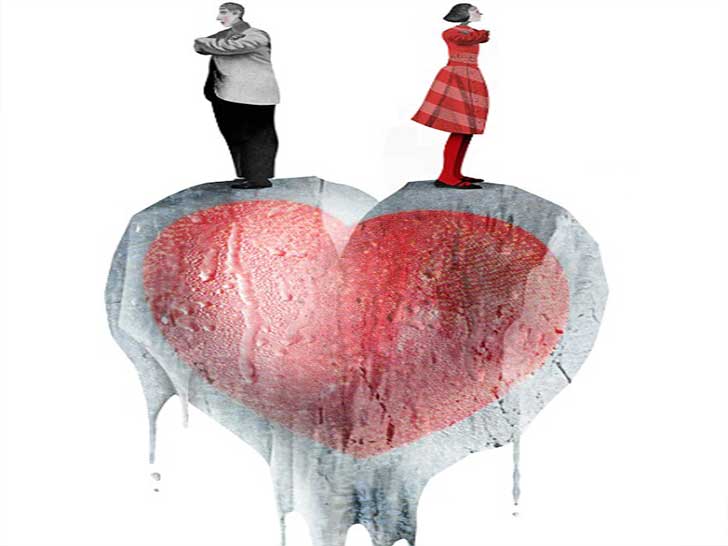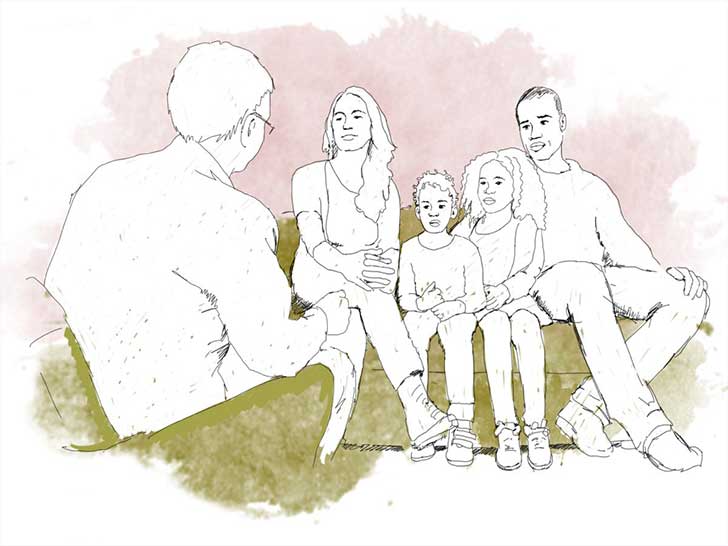اخبار روانشناسی ندای مهر
1. If I wanted to go on a trip for a day (for example‚ to the country or mountains)‚ I would have a hard time finding someone to go with me.
|
1. definitely false
|
2. probably false
|
3. probably true
|
4. definitely true
|
|
1. definitely false
|
2. probably false
|
3. probably true
|
4. definitely true
|
|
1. definitely false
|
2. probably false
|
3. probably true
|
4. definitely true
|
|
1. definitely false
|
2. probably false
|
3. probably true
|
4. definitely true
|
|
1. definitely false
|
2. probably false
|
3. probably true
|
4. definitely true
|
|
1. definitely false
|
2. probably false
|
3. probably true
|
4. definitely true
|
|
1. definitely false
|
2. probably false
|
3. probably true
|
4. definitely true
|
|
1. definitely false
|
2. probably false
|
3. probably true
|
4. definitely true
|
|
1. definitely false
|
2. probably false
|
3. probably true
|
4. definitely true
|
|
1. definitely false
|
2. probably false
|
3. probably true
|
4. definitely true
|
|
1. definitely false
|
2. probably false
|
3. probably true
|
4. definitely true
|
|
1. definitely false
|
2. probably false
|
3. probably true
|
4. definitely true
|
|
||||
|
|
||
|
ARSI (PERSIAN)
A Farsi version of the TIPI is available here (in pdf format). It was developed by Madjid Mirzavaziri‚ Hamid Vazire‚ and Simine Vazire in collaboration with Mohsen Joshanloo.
Here are a number of personality traits that may or may not apply to you. Please write a number next to each statement to indicate the extent to which you agree or disagree with that statement. You should rate the extent to which the pair of traits applies to you‚ even if one characteristic applies more strongly than the other.
1 = Disagree strongly
2 = Disagree moderately
3 = Disagree a little
4 = Neither agree nor disagree
5 = Agree a little
6 = Agree moderately
7 = Agree strongly
I see myself as:
1. _____ Extraverted‚ enthusiastic.
2. _____ Critical‚ quarrelsome.
3. _____ Dependable‚ self-disciplined.
4. _____ Anxious‚ easily upset.
5. _____ Open to new experiences‚ complex.
6. _____ Reserved‚ quiet.
7. _____ Sympathetic‚ warm.
8. _____ Disorganized‚ careless.
9. _____ Calm‚ emotionally stable.
10. _____ Conventional‚ uncreative.
________________________________________________________________
TIPI scale scoring (“R” denotes reverse-scored items):
Extraversion: 1‚ 6R; Agreeableness: 2R‚ 7; Conscientiousness; 3‚ 8R; Emotional Stability: 4R‚ 9; Openness to Experiences: 5‚ 10R.
|
|
||||
|
Family
|
|
I enjoy being at home with my family.
My family gets along well together.
I like spending time with my parents.
My parents and I doing fun things together.
My family is better than most.
Members of my family talk nicely to one another.
My parents treat me fairly.
|
|
Friends
|
|
My friends treat me well.
My friends are nice to me.
I wish I had different friends.*
My friends are mean to me.*
My friends are great
I have a bad time with my friends.*
I have a lot of fun with my friends.
I have enough friends.
My friends will help me if I need it.
|
|
School
|
|
I look forward to going to school.
I like being in school.
School is interesting.
I wish I didn’t have to go to school.*
There are many things about school I don’t like.*
I enjoy school activities.
I learn a lot at school.
I feel bad at school.*
|
|
Living Environment
|
|
I like where I live.
I wish there were different people in my neighborhood.*
I wish I lived in a different house.*
I wish I lived somewhere else.*
I like my neighborhood.
I like my neighbors.
This town is filled with mean people.*
My family’s house is nice.
There are lots of fun things to do where I live.
|
|
Self
|
|
I think I am good looking.
I am fun to be around.
I am a nice person.
Most people like me.
There are lots of things I can do well.
I like to try new things.
I like myself.
|
This section provides a brief introduction to the Relationship Questionnaire (Bartholomew & Horowitz‚ 1991) and the Relationship Scales Questionnaire (Griffin & Bartholomew‚ 1994). Readers are advised to conduct a review of the relevant literature in order to thoroughly acquaint themselves with the concept of adult attachment and the wide array of measures available to assess adult attachments in close relationships (see‚ for example‚ Phil Shaver's attachment web page . Also included in this section are answers to frequently asked questions related to the use of the Relationship Questionnaire and the Relationship Scales Questionnaire.
The RQ is a single item measure made up of four short paragraphs‚ each describing a prototypical attachment pattern as it applies in close adult peer relationships. Participants are asked to rate their degree of correspondence to each prototype on a 7-point scale. An individual might rate him or herself something like: Secure 6‚ Fearful 2‚ Preoccupied 1‚ Dismissing 4. These ratings (or "scores") provide a profile of an individual's attachment feelings and behaviour.
DERIVING SELF-MODEL AND OTHER-MODEL ATTACHMENT DIMENSIONS FOR THE RQ
Griffin‚ D.‚ & Bartholomew‚ K. (1994). Models of the self and other: Fundamental dimensions underlying measures of adult attachment. Journal of Personality and Social Psychology‚ Vol. 67‚ 430-445.
|
Not at all
like me
|
Somewhat
like me
|
Very much
like me
|
|||||
|
Style A.
|
1
|
2
|
3
|
4
|
5
|
6
|
7
|
|
Style B.
|
1
|
2
|
3
|
4
|
5
|
6
|
7
|
|
Style C.
|
1
|
2
|
3
|
4
|
5
|
6
|
7
|
|
Style D.
|
1
|
2
|
3
|
4
|
5
|
6
|
7
|
|
|
||
|
Measure of Attachment Qualities
Carver (1997) published a paper describing four studies which had used his Measure of Attachment Qualities (MAQ). This measure consists of 14 items‚ some of which were newly written but most of which were derived from earlier measures (AAS and ASM) both of which had‚ in turn‚ been based on decompositions of the prototypes in the Adult Attachment Questionnaire. Each item was scored on a four-point Likert-type scale with items ranging from "strongly agree" to "strongly disagree" with no neutral item.
The following list shows the items of the MAQ instrument grouped by the factor on which they most strongly loaded and followed by a prefix which indicates the Adult Attachment Questionnaire (AAQ) description from which the item was derived.
Avoidance
Ambivalence-Worry
Ambivalence-Merger
Security
Notes:
(R) = Reverse scored item (S) = Secure‚ (Av) = Avoidant‚ (Amb) = Anxious/Ambivalent The authors grouped the items following a factor analysis‚ using oblique rotation‚ which resulted in four factors that together accounted for 61% of the variance. The factors for avoidance and security that were loosely‚ inversely related. The other two factors were interpreted from their component items as ambivalence-worry‚ representing fear of abandonment‚ and ambivalence-merger‚ which included the items indicating a desire to merge. A second-order factor analysis yielded two high-order factors that were unrelated (r = 0.03)‚ one of which distinguished between security and avoidance and the other between the two types of ambivalence.
Scores on this scale were measured against participant's classifications using a variety of other attachment measures.
Comparison with the AAQ showed largely the expected relationships. These results were taken to confirm the presence of an underlying three factor model of attachment. Although differences between types of ambivalence were acknowledged it was noted that the ambivalence-worry scale‚ which was scored higher by avoidant than by secure subjects‚ may be tapping a general 'insecurity' aspect of attachment.
Comparison with the RQ and the RSQ was problematic. Although many of the expected relationships emerged‚ the MAQ did not clearly differentiate two styles of avoidance‚ as required in the RQ. Cluster analysis was conducted on the MAQ scores solving for both three- and four-cluster models. Results from this lent further support for an interpretation of MAQ results in terms of a three- rather than a four-component model.
http://www.richardatkins.co.uk/atws/page/49.html
|
|
|
||
|
Rotter's Locus of Control Scale
1. a. Children get into trouble because their patents punish them too much. b. The trouble with most children nowadays is that their parents are too easy with them.
2. a. Many of the unhappy things in people's lives are partly due to bad luck.
b. People's misfortunes result from the mistakes they make.
3. a. One of the major reasons why we have wars is because people don't take enough interest in politics.
b. There will always be wars‚ no matter how hard people try to prevent them.
4. a. In the long run people get the respect they deserve in this world
b. Unfortunately‚ an individual's worth often passes unrecognized no matter how hard he tries
5. a. The idea that teachers are unfair to students is nonsense.
b. Most students don't realize the extent to which their grades are influenced by accidental happenings.
6. a. Without the right breaks one cannot be an effective leader.
b. Capable people who fail to become leaders hive not taken advantage of their opportunities.
7. a. No matter how hard you try some people just don't like you.
b. People who can't get others to like them don't understand how to get along with others.
8. a. Heredity plays the major role in determining one's personality
b. It is one's experiences in life which determine what they're like.
9. a. I have often found tlint what is going to happen will happen.
b. Trusting to fate has never turned out as well for me as making a decision to take a definite course of action.
10. a. In the case of the well prepared student there is rarely if ever such.a thing as an unfair test.
b. Many times exam questions tend to be so unrelated to course work that studying in really useless.
11. a. Becoming a success is a matter of hard work‚ hick has little or nothing to do with it.
b. Getting a good job depends mainly on being in the right place at the. right time.
12. a. The average citizen can have an influence in government decisions.
b. This world is run by the few people in power‚ and there is not much the little guy can do about it.
13. a. When I make plans‚ I am almost certain that I can make them work.
b. It is not always wise to plan too far ahead because many things turn out to- be a matter of good or bad fortune anyhow.
14. a. There are certain people who are just no good.
b. There is some good in everybody.
15. a. In my case getting what I want has little or nothing to do with luck.
b. Many times we might just as well decide what to do by flipping a coin.
16. a. Who gets to be the boss often depends on who was lucky enough to be in the right place first.
b. Getting people to do the right thing depends upon ability‚ luck has little or nothing to do with it.
17. a. As far as world affairs are concerned‚ most of us are the victims of forces we can neither understand‚ nor control.
b. By taking an active part in political and social affairs the people can control world events.
18. a. Most people don't realize the extent to which their lives are controlled by accidental happenings.
b. There really is no such thing as "luck."
19. a. One should always be willing to admit mistakes.
b. It is usually best to cover up one's mistakes.
20. a. It is hard to know whether or not a person really likes you.
b. How many friends you have depends upon how nice a person you are.
21. a. In the long run the bad things that happen to us are balanced by the good ones.
b. Most misfortunes are the result of lack of ability‚ ignorance‚ laziness‚ or all three.
22. a. With enough effort we can wipe out political corruption.
b. It is difficult for people to have much control over the things politicians do in office.
23. a. Sometimes I can't understand how teachers arrive at the grades they give.
b. There is a direct connection between how hard 1 study and the grades I get.
24. a. A good leader expects people to decide for themselves what they should do.
b. A good leader makes it clear to everybody what their jobs are.
25. a. Many times 1 feel that I have little influence over the things that happen to me.
b. It is impossible for me to believe that chance or luck plays an important role in my life.
26. a. People are lonely because they don't try to be friendly.
b. There's not much use in trying too hard to please people‚ if they like you‚ they like you.
27. a. There is too much emphasis on athletics in high school.
b. Team sports are an excellent way to build character.
28. a. What happens to me is my own doing.
b. Sometimes I feel that I don't have enough control over the direction my life is taking.
29. a. Most of the time I can't understand why politicians behave the way they do.
b. In the long run the people are responsible for bad government on a national as well as on a local level.
Score one point for each of the following: 2.a‚ 3.b‚ 4.b‚ 5.b‚ 6.a‚ 7.a‚ 9.a‚ 10.b‚ 11.b‚ 12.b‚ 13.b‚ 15.b‚ 16.a‚ 17.a‚ 18.a‚ 20.a‚
21.a‚ 22.b‚ 23.a‚ 25.a‚ 26.b‚ 28.b‚ 29.a.
A high score = External Locus of Control
A low score = Internal Locus of Control
Locus of Control
Locus of Control refers to the extent to which individuals believe that they can control events that affect them. Individuals with a high internal locus of control believe that events result primarily from their own behavior and actions. Those with a high external locus of control believe that powerful others‚ fate‚ or chance primarily determine events. Those with a high internal locus of control have better control of their behaviour and tend to exhibit more political behaviors than externals and are more likely to attempt to influence other people; they are more likely to assume that their efforts will be successful. They are more active in seeking information and knowledge concerning their situation than do externals.The propensity to engage in political behavior is stronger for individuals who have a high internal locus of control than for those who have a high external locus of control.
http://guerin.ballarat.edu.au/ard/bssh/psych/rot.htm
|
Loyal سایت روان سنجی : به نظر می رسد که کلمه مقابل درست است .
Researchers at the Foley Center have designed a number of measures for assessing individual differences in generativity among adults. Included among these are thematic coding schemes for assessing generative imagery in (a) reports of personal goals or strivings and (b) narrative accounts of significant autobiogrpaphical scenes. The two most commonly used measures‚ however‚ are self-report questionnaires -- the Loyola Generativity Scale (LGS) and the Generative Behavior Checklist (GBC).
[Download as PDF]
Information concerning the construction and validation of the LGS and GBC can be found in:
For each of the following statements‚ please indicate how often the statement applies to you‚ by marking either a "0‚" "1‚" "2‚" or "3" in the space in front.
Mark "1" if the statement only occsionally or seldom applies to you.
Mark "2" if athe statement applies to you fairly often.
Mark "3" if the statement applies to you very often or nearly always.
____1. I try to pass along the knowledge I have gained through my experiences.
____2. I do not feel that other people need me.
____3. I think I would like the work of a teacher.
____4. I feel as though I have made a difference to many people.
____5. I do not volunteer to work for a charity.
____6. I have made and created things that have had an impact on other people.
____7. I try to be creative in most things that I do.
____8. I think that I will be remembered for a long time after I die.
____9. I believe that society cannot be responsible for providing food and shelter for all homeless people.
____10. Others would say that I have made unique contributions to society.
____11. If I were unable to have children of my own‚ I would like to adopt children.
____12. I have important skills that I try to teach others.
____13. I feel that I have done nothing that will survive after I die.
____14. In general‚ my actions do not have a positive effect on other people.
____15. I feel as though I have done nothing of worth to contribute to others.
____16. I have made many commitments to many different kinds of people‚ groups‚ and activities in my life.
____17. Other people say that I am a very productive person.
____18. I have a responsibility to improve the neighborhoond in which I live.
____19. People come to me for advice.
____20. I feel as though my contributions will exist after I die.
Phone: 847-491-8193 E-mail: این آدرس ایمیل توسط spambots حفاظت می شود. برای دیدن شما نیاز به جاوا اسکریپت دارید
©2009 Northwestern University

-

مشاوره خانواده چیست و برای کدام اعضای خانواده مهم است؟
کارشناس ندای مهر (مشاوره خانواده) -

مهمترین دلایل شما برای ازدواج و تشکیل خانواده چیست؟
کارشناس ندای مهر (مشاوره ازدواج) -

هدف مشاوره خانواده چیست؟
کارشناس ندای مهر (مشاوره خانواده) -

از دید مشاور ازدواج علت سرد شدن رابطه زوج قبل از مراسم ازدواج چیست؟
کارشناس ندای مهر (مشاوره ازدواج) -

چرا به مشاوره خانواده مراجعه کنیم و به وی پول بدهیم؟
کارشناس ندای مهر (مشاوره خانواده)






